![]()
![]()
![]()
Use LEFT and RIGHT arrow keys to navigate between flashcards;
Use UP and DOWN arrow keys to flip the card;
H to show hint;
A reads text to speech;
21 Cards in this Set
- Front
- Back
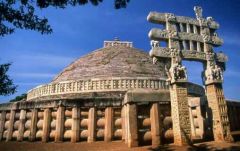
|
N: Great Stupa at Sanchi D: 300 B.C.E - 100 C.E P/S: Buddhist A: Maurya, late Sunga Dynasty OL: Madhya Pradesh, India P: King Ashoka MT: Stone masonry, Sandstone on dome F: Place of prayer, houses ancient artifacts DT: dirt, mound, dome, sacred C: King Ashoka was the first king to embrace Buddhism and built 84,000 stupas where Buddha's ashes were divided among them all; Ashoka built Stupas in basically every possible convenient location so converts can fully embrace their new faith |
|
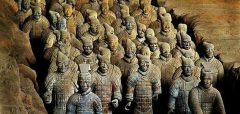
|
N: Terra cotta warriors from mausoleum of the first Qin emperor of China D: 221-209 B.C.E P/S: Han-Dynasty A: Qin Dynasty OL: China P: Qin Shihuang MT: Painted Terra cotta F: Army that guards the tomb and protect Shihuang in the after life DT: immortality, citadel, burial, afterlife, guard C: The First Emperor built the Mausoleum so he can conquer death and filled it with these terra cotta warriors to guard him in the afterlife |
|
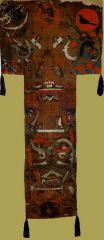
|
N: Funeral Banner of Lady Dai (Xin Zhui) D: 180 B.C.E P/S: Han Dynasty A: Unknown OL: China P: A high ranking Han official civil servant MT: Painted silk F: Most likely to identify the dead during mourning ceremonies DT: tomb, registers, shroud, portrait C: Religious |
|
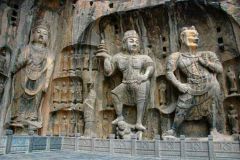
|
N: Longmen caves D: 493-1127 C.E P/S: Tang Dynasty A: Unknown OL: Luoyang, China P: N/A MT: Limestone F: Contains 110,000 Buddhist stone statues, 60 stupas, and 2,800 inscriptions carved on steles DT: carvings, statues, stupas, inscriptions, steles, early Buddhism C: Cave is an excellent site for understanding how rulers wielded this foreign religion to affirm assimilation and superiority |
|
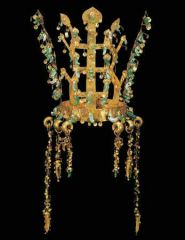
|
N: Gold and Jade crown D: 5th-6th century C.E P/S: Three Kingdoms period A: Unknown OL: Silla Kingdom, Korea P: N/A MT: Metalwork F: ceremonial rites of the Silla royalty DT: glitter, gold, shamanism C: The Silla kingdom was one of the most powerful kingdoms in the southeast peninsula of Korea; Chinese emissaries described the kingdom as a country of gold |
|
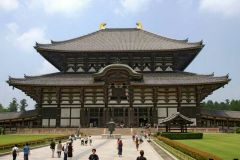
|
N: Todai-ji D: 743 C.E; rebuilt 1700 C.E P/S: Buddhism A: Various, including sculptors Unkei and Keikei, and the Kei School OL: Nara, Japan P: Possibly a Shogun MT: Bronze and wood (sculpture); wood with ceramic-tile roofing (architecture) F: Place of worship DT: Japanese, Buddhism, C: It was the largest building project ever on Japanese soil; influenced by the arrival of Buddhism in Japan |
|
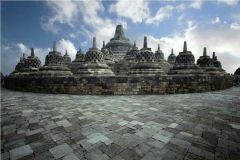
|
N: Borobudur Temple D: 750-842 C.E P/S: Buddhism A: Sailendra Dynasty OL: Central Java, Indonesia P: N/A MT: Volcanic-stone masonry F: Buddhist Sanctuary DT: path, pyramid, devotion, mandala C: design was conceived by the poet, thinker, and architect Gunadharma, who's considered to be a man of great vision and devotion |
|
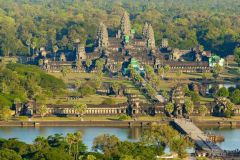
|
N: Angkor, the temple of Angkor Wat D: 800-1400 C.E P/S: Hindu, Angkor Dynasty A: OL: Angkor Thom, Cambodia P: MT: Stone masonry, Sandstone F: DT: C: |
|
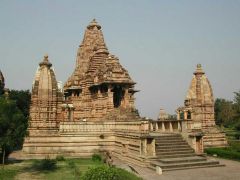
|
N: Lakshmana Temple D: 930-950 C.E P/S: Hindu, Chandella Dynasty A: OL: Khajuraho, India P: MT: Sandstone F: DT: C: |
|
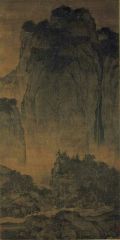
|
N: Travelers among Mountains and streams D: 1000 C.E P/S: A: Fan Kuan OL: P: MT: Ink and colors on silk F: DT: C: |
|
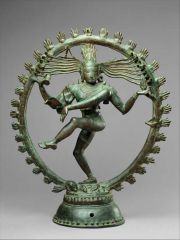
|
N: Shiva as Lord of the Dance D: 11th century C.E P/S: Hindu; Chola Dynasty A: Unknown OL: India (Tamil Nadu) P: MT: cast bronze F: DT: C: |
|
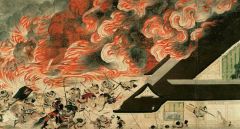
|
N: Night attack on the Sanjô Palace D: 1250-1300 C.E P/S: Kamakura Period A: OL: Japan P: MT: Handscroll (ink and color on paper) F: DT: C: |
|
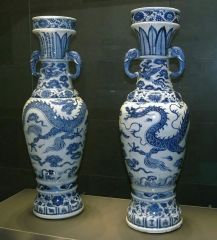
|
N: The David Vases D: 1351 C.E P/S: Yuan Dynasty A: OL: China P: MT: White porcelain with cobalt-blue underglaze F: DT: C: |
|
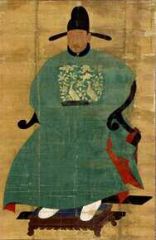
|
N: Portrait of Sin Sukju (1417-1475) D: 15th century C.E P/S: A: Unknown OL: Imperial Bureau of Painting P: MT: Hanging scroll (ink and color on silk) F: DT: C: |
|
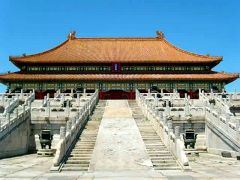
|
N: Forbidden City D: 15th century C.E and later P/S: Ming Dynasty A: OL: Beijing, China P: MT: Stone Masonry, marble, brick, wood, and ceramic tile F: DT: C: |
|
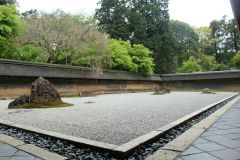
|
N: Ryoan-ji D: 1480 C.E; current design most likely dates to the 18th century P/S: Muromachi Period, Japan A: OL: Kyoto, Japan P: MT: Rock garden F: DT: C: |
|
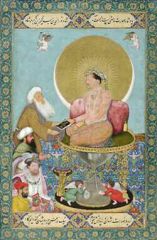
|
N: Jahangir Preferring a Sufi Shaikh to Kings D: 1620 C.E P/S: A: Bichitr OL: India P: MT: Watercolor, gold, and ink on paper F: DT: C: |
|
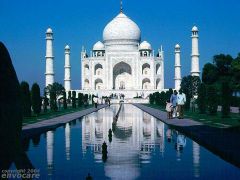
|
N: Taj Mahal D: 1632-1653 C.E P/S: A: Masons, marble workers, mosaicists, and decorators working under supervision of Imperial architect Ustad Ahmad Lahori OL: Agra, Uttar Pradesh, India P: MT: Stone masonry, and marble with inlay, of precious, and semiprecious stones; gardens F: DT: C: |
|

|
N: White and Red Plum Blossoms D: 1710-1716 C.E P/S: A: Ogata Korin OL: P: MT: Ink, watercolor, and gold leaf on paper F: DT: C: |
|
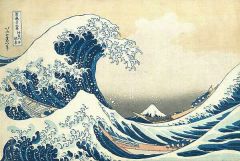
|
N: Under the Wave off Kanagawa (Kanagawa oki Nami ura), also known the Great Wave D: 1830-1833 C.E P/S: A: Katsushika Hokusai OL: Asia P: MT: Polychrome woodblock print; ink and color on paper F: DT: C: |
|

|
N: Chairman Mao en Route to Anyuan D: 1969 C.E P/S: A: Unknown; based on an oil painting by Liu Chunhua OL: P: MT: Color lithograph F: DT: C: |

